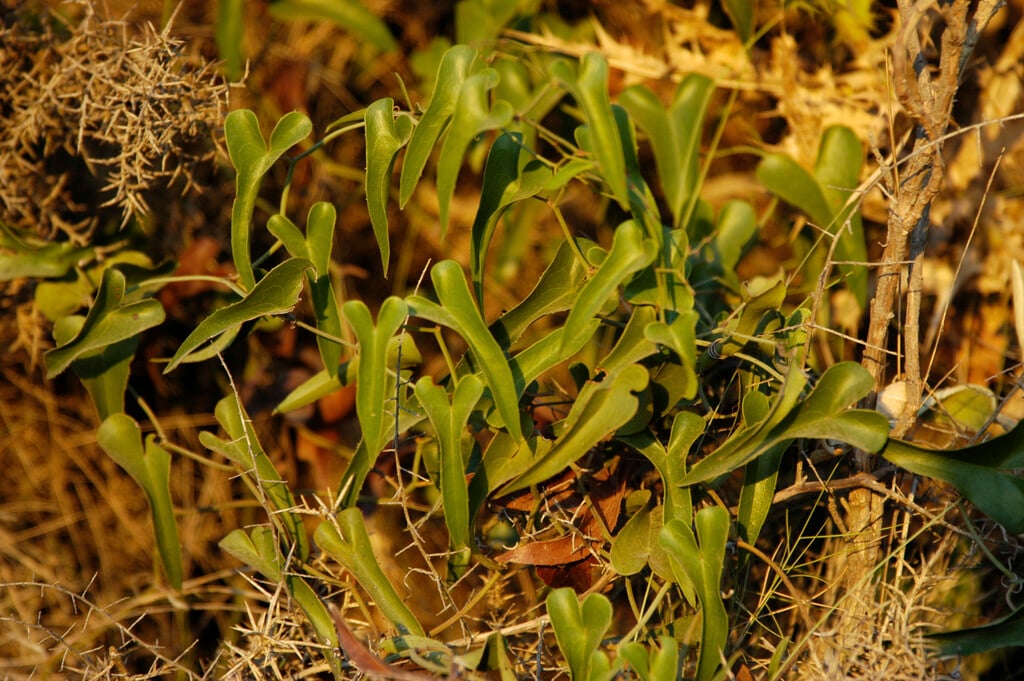Smilax aspera
prickly ivy
Evergreen climber about 3m tall, eventually forming a dense tangle of thorny, angular stems, and leathery, ovate, heart-shaped, glossy green leaves, often blotched grey. Small, fragrant, pale green flowers are produced in racemes in late summer and early autumn, followed by red fruits
Size
Ultimate height
2.5–4 metresTime to ultimate height
2–5 yearsUltimate spread
2.5–4 metresGrowing conditions
Moisture
Well–drainedpH
Acid, Alkaline, NeutralColour & scent
| Stem | Flower | Foliage | Fruit | |
| Spring | Green Grey Silver | |||
|---|---|---|---|---|
| Summer | Green | Green Grey Silver | ||
| Autumn | Green | Green Grey Silver | Red | |
| Winter | Green Grey Silver |
Position
- Full sun
- Partial shade
Aspect
South–facing or West–facing
Exposure
Sheltered Hardiness
H3Botanical details
- Family
- Smilacaceae
- Native to GB / Ireland
- No
- Foliage
- Evergreen
- Habit
- Climbing, Trailing
- Genus
A large genus of around 300 to 350 evergreen and deciduous species of shrub, found in tropical and sub-tropical regions around the world. They form very dense thickets of spiny stems, with heart-shaped green foliage and greenish-white flowers which appear in May and June. Pollinated plants produce bright, round blue-red berries that ripen in the autumn
- Name status
Correct
- Plant range
- Europe, Asia, Africa
How to grow
Cultivation
Requires a warm sunny position in well-drained soil, grown against a support. Not suitable for cold, frost prone areas
Propagation
Propagate by seed in autumn or by division in autumn or spring
Suggested planting locations and garden types
- Cottage and informal garden
- Sub-tropical
- Wildlife gardens
- Climber and wall shrubs
Pruning
Pruning group 11 after flowering, care necessary to avoid prickly stems
Pests
Generally pest-free
Diseases
Generally disease-free
Love gardening
Sign up to receive regular gardening tips, inspiration, offers and more
View our Privacy Policy
Get involved
The Royal Horticultural Society is the UK’s leading gardening charity. We aim to enrich everyone’s life through plants, and make the UK a greener and more beautiful place.

